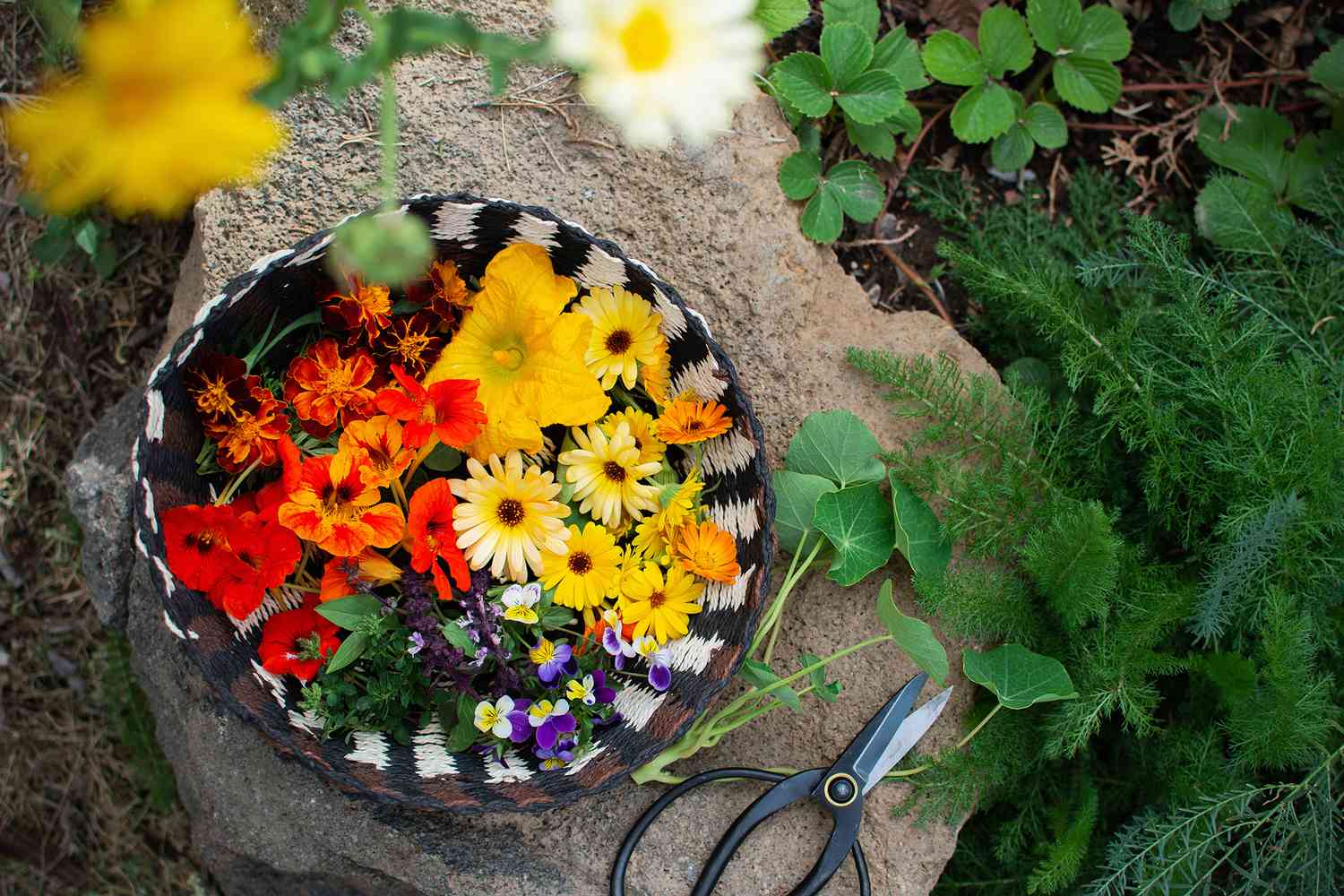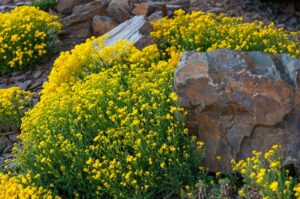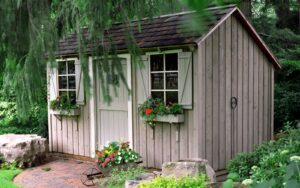Top 10 Affordable Edible Spring Flowers to Grow
Spring brings a symphony of colors to our gardens, but did you know many of those beautiful blooms can also grace your dinner table? Edible flowers aren’t just visually appealing—they can add unique flavors, textures, and nutritional benefits to your meals. Growing your own edible flowers is an affordable way to elevate your culinary experiences while enjoying the therapeutic benefits of gardening.
This guide explores the top 10 affordable edible spring flowers that you can easily grow in your garden, providing you with all the information you need to cultivate these delicious blooms successfully. From planting and care instructions to culinary uses and health benefits, we’ve got you covered. So put on your gardening gloves, and let’s dive into the colorful world of edible spring flowers!
Why Grow Edible Spring Flowers?
Before we explore specific flowers, let’s understand why growing edible flowers is worth your time and effort. According to the United States Department of Agriculture (USDA), gardening activities, including growing edible flowers, contribute to physical health, mental well-being, and sustainable food systems. As per their Community Food Projects program, more Americans are turning to home gardening to supplement their diets with fresh, nutritious produce, including edible flowers. You can learn more about these initiatives through the USDA’s National Institute of Food and Agriculture.
Growing edible flowers offers numerous benefits:
- Culinary versatility: Edible flowers can be used in salads, desserts, beverages, and as garnishes, adding unique flavors and visual appeal to your dishes.
- Nutritional value: Many edible flowers contain vitamins, minerals, and antioxidants that contribute to a healthy diet.
- Cost-effective gardening: Most edible flowers are easy to grow from seeds, making them an affordable addition to your garden.
- Pollinator attraction: Flowering plants attract bees, butterflies, and other beneficial insects to your garden, supporting local ecosystems.
- Dual-purpose landscaping: Edible flowers serve both ornamental and practical purposes, maximizing the value of your garden space.
Now, let’s explore the top 10 affordable edible spring flowers that you can easily grow in your garden.
1. Nasturtiums: The Beginner’s Delight
Nasturtiums (Tropaeolum majus) are among the most popular edible flowers, beloved for their vibrant colors and peppery flavor reminiscent of watercress. These versatile flowers are perfect for novice gardeners due to their minimal care requirements and prolific blooming habits.
Growing Nasturtiums
Nasturtiums thrive in full sun but can tolerate partial shade, especially in hot climates. They prefer well-draining soil and, interestingly, bloom more abundantly in poor soil with less nitrogen. This makes them perfect for those areas in your garden where other plants might struggle.
You can directly sow nasturtium seeds outdoors after the last frost date in your region. Before planting, soak the seeds overnight to improve germination rates. Plant them about half an inch deep and 10-12 inches apart. Germination typically occurs within 7-10 days, and you can expect blooms within 50-60 days of planting.
These flowers come in climbing and bush varieties, giving you flexibility based on your garden space. The climbing varieties can reach up to 8 feet and work well on trellises or as ground cover, while bush varieties stay compact at about 12 inches tall, making them suitable for containers or border plantings.
Culinary Uses
Every part of the nasturtium plant is edible, offering various culinary possibilities:
- The flowers have a sweet initial taste followed by a peppery finish, making them excellent additions to salads, sandwiches, and as colorful garnishes.
- Young leaves provide a spicy kick to salads and can be used like other leafy greens.
- Seedpods, when pickled, make an excellent substitute for capers.
Health Benefits
Nasturtiums aren’t just delicious; they’re also nutritious. These vibrant blooms contain significant amounts of vitamin C, supporting immune function. They also possess natural antibiotic properties and have been used traditionally for treating minor respiratory infections. Additionally, nasturtiums contain compounds that have been shown to have antimicrobial effects, potentially helping to fight certain bacterial and fungal infections.
According to research from the National Center for Complementary and Integrative Health, a division of the National Institutes of Health, many traditional flowering plants like nasturtiums contain beneficial phytochemicals that may contribute to overall health. You can explore more about the health benefits of plant-based foods at the NIH’s Dietary Supplements database.
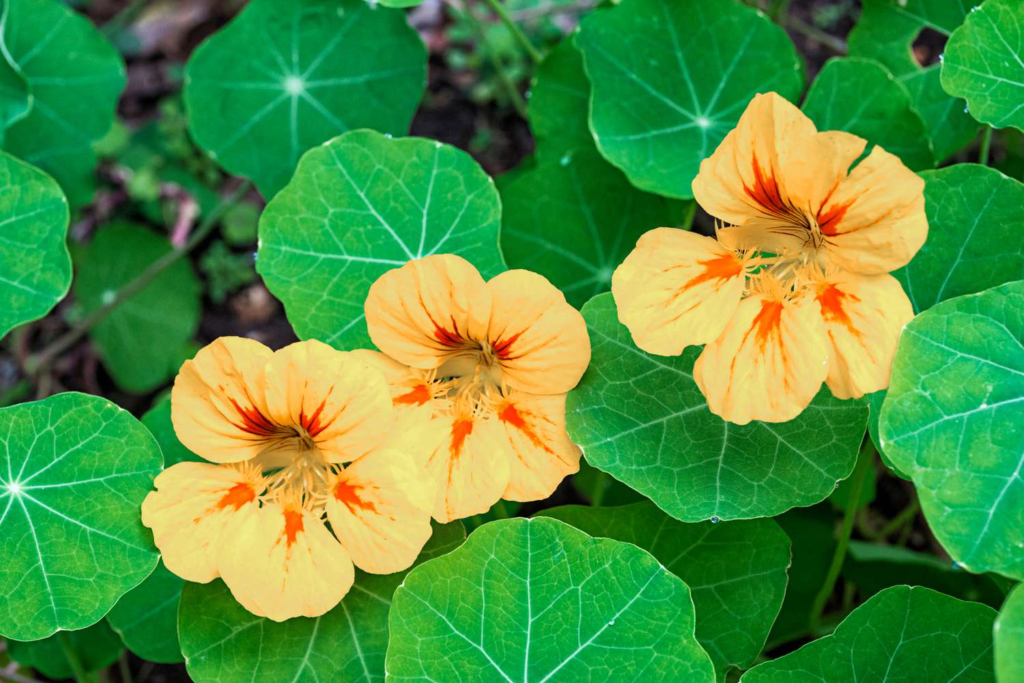
2. Pansies and Violas: The Winter-to-Spring Transition Stars
Pansies (Viola × wittrockiana) and their smaller cousins, violas (Viola cornuta), are cool-season favorites that bridge the gap between winter and spring. Their ability to withstand cold temperatures makes them among the earliest edible flowers available in your garden each year.
Growing Pansies and Violas
In most US climate zones, you can plant pansies and violas in early spring as soon as the soil can be worked. These hardy plants can tolerate light frosts and even survive through mild winters in USDA zones 7-9. For an early spring harvest, you might even plant them in fall in these warmer regions.
These flowers prefer rich, well-draining soil with a slightly acidic pH between 5.4 and 5.8. Plant them in areas with morning sun and afternoon shade for optimal growth, especially in warmer regions. Space plants about 6-8 inches apart to allow for proper air circulation and growth.
When planting from seeds, start them indoors 8-10 weeks before the last expected frost. Germination typically takes 10-14 days at temperatures between 65-70°F. Alternatively, purchasing starter plants from nurseries is an affordable option that gives you a head start on the growing season.
Culinary Uses
Pansies and violas offer a mild, slightly sweet flavor similar to lettuce with subtle notes of wintergreen. Their delicate taste makes them perfect for:
- Freezing in ice cubes for elegant cocktails and beverages
- Crystallizing with sugar for cake decorations
- Adding fresh to salads, fruit plates, and cheese boards
- Using as edible garnishes for desserts and entrees
The colorful varieties add visual interest to your dishes, with deeper purple and blue pansies offering a more pronounced flavor than their lighter counterparts.
Health Benefits
These petite flowers pack a nutritional punch, containing significant amounts of vitamins A and C. They also provide rutin, a bioflavonoid that strengthens blood vessels and may help prevent certain cardiovascular conditions. Their anti-inflammatory properties have made them a fixture in traditional herbalism for centuries.

3. Calendula: The Versatile Marigold
Calendula (Calendula officinalis), also known as pot marigold, should not be confused with common marigolds (Tagetes species), which are not typically eaten. Calendula’s bright orange and yellow petals have been used for centuries in both culinary and medicinal applications.
Growing Calendula
One of calendula’s greatest attributes is its adaptability to various growing conditions. This hardy annual thrives in full sun but tolerates partial shade, and it isn’t particularly fussy about soil quality as long as drainage is good. It’s remarkably resilient, making it perfect for beginning gardeners.
You can direct sow calendula seeds outdoors after the danger of frost has passed, or start them indoors 6-8 weeks before the last frost date. Plant seeds about 1/4 inch deep and thin seedlings to 8-12 inches apart once they reach a few inches in height. Calendula typically blooms within 45-60 days after sowing.
For continuous flowering throughout the growing season, regularly deadhead spent blooms. This practice encourages new flower production and prevents the plant from going to seed too quickly. In moderate climates (USDA zones 8-10), calendula may self-seed and return year after year with minimal effort on your part.
Culinary Uses
Calendula petals have a slightly spicy, tangy flavor often described as similar to saffron, which explains why they’ve historically been used as a saffron substitute. The petals, not the bitter central parts of the flower, are the edible portion. They can be used:
- As a natural food coloring for dishes like rice, giving a golden yellow hue similar to saffron
- Fresh in salads, soups, and egg dishes
- Dried and used as a tea ingredient
- Infused in oils and vinegars for distinctive flavoring
Health Benefits
Calendula’s benefits extend far beyond the kitchen. According to the National Center for Complementary and Integrative Health, calendula has traditional uses for reducing inflammation and helping wounds heal. The flower contains triterpenoids, flavonoids, and carotenoids that contribute to its medicinal properties.
Calendula extracts are commonly found in skincare products due to their skin-soothing properties. In the kitchen, these same compounds provide antioxidant benefits when consumed. Studies from the U.S. National Library of Medicine have documented calendula’s potential in supporting immune function and reducing oxidative stress. For more scientific research on calendula’s health properties, you can visit the PubMed Central database maintained by the National Institutes of Health.
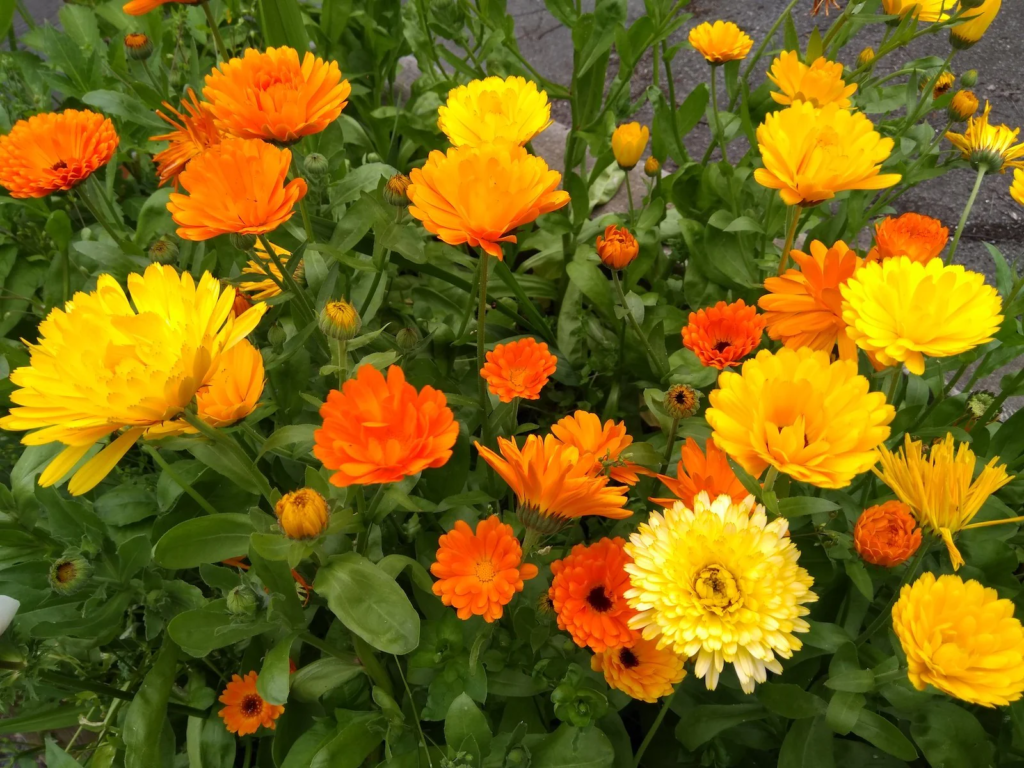
4. Borage: The Cucumber-Flavored Blue Beauty
Borage (Borago officinalis) stands out in the garden with its striking star-shaped blue flowers and cucumber-like flavor. This annual herb has been cultivated since Roman times and remains a favorite among gardeners for its unique taste and bee-attracting properties.
Growing Borage
Borage is one of the easiest edible flowers to grow, making it perfect for gardeners of all experience levels. This annual herb prefers full sun but can tolerate partial shade in hotter climates. It thrives in well-draining soil and, once established, is quite drought-tolerant.
Direct sow borage seeds in your garden after the last frost date. The seeds need light to germinate, so press them gently into the soil surface rather than burying them. Space plants about 12 inches apart, as borage can grow quite large—typically 1-3 feet tall and wide. Germination usually occurs within 5-15 days, and plants will bloom within 8-10 weeks.
One notable characteristic of borage is its self-seeding capability. If you allow some flowers to go to seed, you’ll likely find volunteer plants emerging the following spring. This makes borage an economical choice, as a single packet of seeds can provide years of harvests.
Culinary Uses
Borage flowers offer a mild cucumber-like flavor that adds a refreshing note to various dishes:
- Fresh in salads, especially fruit salads
- Frozen in ice cubes for summer drinks
- Steeped in lemonade or iced tea
- Candied as cake decorations
- Traditional garnish for Pimm’s Cup cocktails
The young leaves are also edible, though they have a fuzzy texture that some find off-putting. You can cook them like spinach to reduce this fuzziness, or finely chop them for use in soups and stews.
Health Benefits
Historically, borage has been associated with courage and was often taken by warriors before battle. Modern research suggests this association might not be entirely superstition. Borage seeds contain gamma-linolenic acid (GLA), an omega-6 fatty acid with anti-inflammatory properties. The flowers and leaves contain beneficial compounds including calcium, potassium, and vitamin C.
The USDA Agricultural Research Service has studied various traditional herbs, including borage, for their nutritional profiles. Their findings indicate that edible flowers like borage can contribute meaningful amounts of nutrients and antioxidants to the diet when consumed regularly. For more information on the nutritional content of various plants, you can reference the USDA FoodData Central database.

5. Violets: The Sweet Woodland Gems
Wild violets (Viola species) are often overlooked as common lawn weeds, but these sweet little flowers deserve a place in your edible garden. Their heart-shaped leaves and delicate blooms appear in early spring, often before other garden plants have awakened from winter dormancy.
Growing Violets
Violets are perennials that thrive in partially shaded areas with moist, rich soil. They naturally occur in woodland settings, making them perfect for those shadier spots in your garden where other edible plants might struggle. In many regions of the US, especially the eastern and midwestern states, you might already have wild violets growing in your yard!
If you’re starting from scratch, violet seeds can be direct-sown in fall or early spring. They require a period of cold stratification to germinate properly. Alternatively, you can purchase violet plants from nurseries or divide existing clumps in early spring or fall. Plant them 6-8 inches apart in areas with morning sun and afternoon shade.
One advantage of violets is their spreading nature—once established, they form attractive groundcover that returns year after year. This makes them extremely cost-effective as an edible landscaping option.
Culinary Uses
Violet flowers have a sweet, floral flavor that works beautifully in:
- Salads, where they add color and subtle sweetness
- Syrups for flavoring beverages and desserts
- Jellies and jams
- Crystallized as elegant cake decorations
- Infused in vinegars for spring salad dressings
The young, tender leaves are also edible and contain even more vitamins than the flowers. They can be used like spinach in salads, soups, and stews.
Health Benefits
Violets have a long history of medicinal use. They contain compounds called saponins and flavonoids, which may have antioxidant and anti-inflammatory properties. Traditional herbalists have used violet preparations for centuries to treat conditions ranging from coughs to skin irritations.
According to the U.S. Forest Service’s database of native plants, wild violets are not only beautiful and edible but also play an important ecological role as host plants for certain butterfly species. The USDA Plants Database provides extensive information on the ecological benefits of native species like violets.
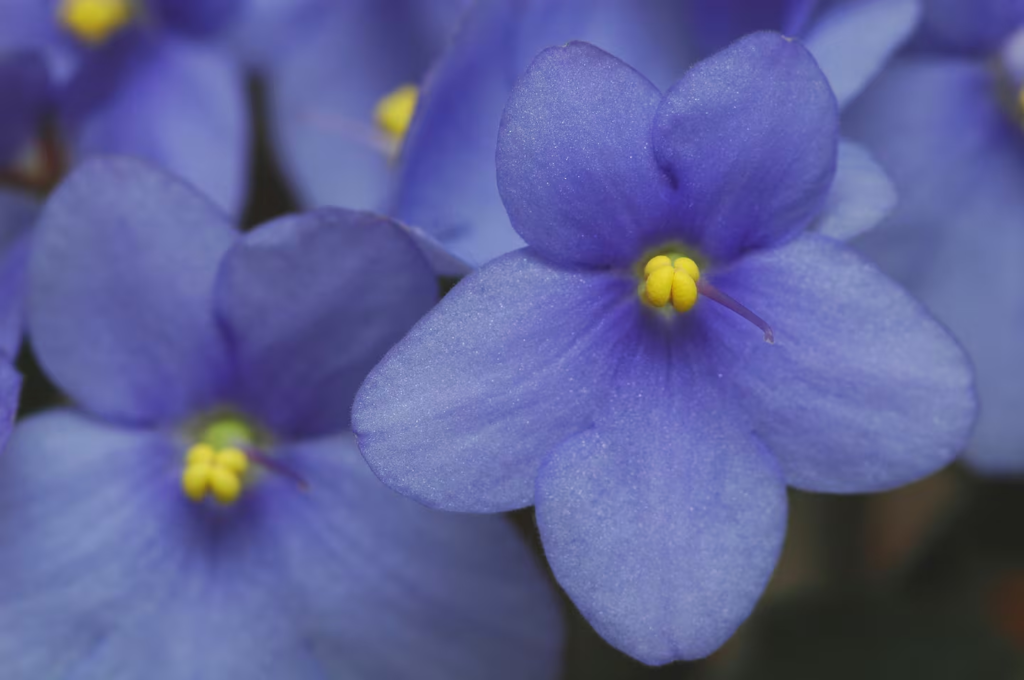
Comparative Growth Requirements
When planning your edible flower garden, understanding the specific needs of each plant species is crucial for success. The following table outlines the key growing requirements for the first five edible spring flowers we’ve discussed:
| Flower | Sunlight Needs | Soil Preference | Water Requirements | Days to Germination | Days to Flowering | USDA Hardiness Zones |
|---|---|---|---|---|---|---|
| Nasturtiums | Full sun to partial shade | Poor to moderate, well-draining | Moderate, let dry between watering | 7-10 days | 50-60 days | Annual, zones 2-11 |
| Pansies/Violas | Morning sun, afternoon shade | Rich, well-draining, slightly acidic | Consistent moisture | 10-14 days | 70-85 days | Zones 4-9 |
| Calendula | Full sun to partial shade | Well-draining, tolerates poor soil | Moderate, drought tolerant once established | 5-15 days | 45-60 days | Annual, zones 2-11 |
| Borage | Full sun to partial shade | Well-draining | Low, drought tolerant | 5-15 days | 50-70 days | Annual, zones 2-11 |
| Violets | Partial shade | Rich, moist | Medium-high | Variable | Perennial, blooms in early spring | Zones 3-9 |
This table serves as a quick reference guide to help you determine which edible flowers will work best in different areas of your garden based on available sunlight, soil conditions, and climate zone.
6. Chives: The Perennial Allium Favorite
Chives (Allium schoenoprasum) are often grown for their flavorful leaves, but their beautiful purple pom-pom flowers are equally delicious and add both visual appeal and an oniony zest to your culinary creations.
Growing Chives
As perennial herbs, chives offer excellent value for your gardening dollar. Once established, these hardy plants will return year after year, often expanding into larger clumps that can be divided to create more plants. Chives thrive in full sun but can tolerate partial shade, preferring rich, well-draining soil with consistent moisture.
You can start chives from seeds indoors 8-10 weeks before the last frost date. Sow seeds 1/4 inch deep in seed-starting mix, keeping the soil consistently moist until germination occurs in 10-14 days. Alternatively, purchase established plants from nurseries or farmers’ markets for a quicker harvest.
Plant chives 8-12 inches apart in your garden after the danger of frost has passed. These resilient plants are hardy in USDA zones 3-9, making them suitable for most regions across the United States. For container gardening, a 6-8 inch pot can easily accommodate a single chive plant.
Culinary Uses
Chive blossoms offer a milder onion flavor compared to the leaves, making them perfect for dishes where you want subtle allium notes without overpowering other ingredients:
- Separated into individual florets and sprinkled over salads
- Infused in vinegar to create a beautiful pink condiment
- Added to soft cheese or butter for spreads
- Used as garnish for soups, potatoes, and egg dishes
- Battered and fried as fritters (a traditional recipe in some European cultures)
To harvest chive blossoms, simply snip the entire flower head when fully opened. They’ll keep in the refrigerator for a few days if placed in a container with a damp paper towel.
Health Benefits
Like other members of the allium family, chives contain compounds that support cardiovascular health. They’re rich in vitamins A and C, as well as calcium, iron, and other minerals. Chives also contain quercetin, a flavonoid with antioxidant and anti-inflammatory properties.
The U.S. Department of Health and Human Services recognizes the health benefits of allium vegetables like chives through resources such as the Dietary Guidelines for Americans, which emphasizes the importance of varied vegetable consumption, including herbs, for optimal health.
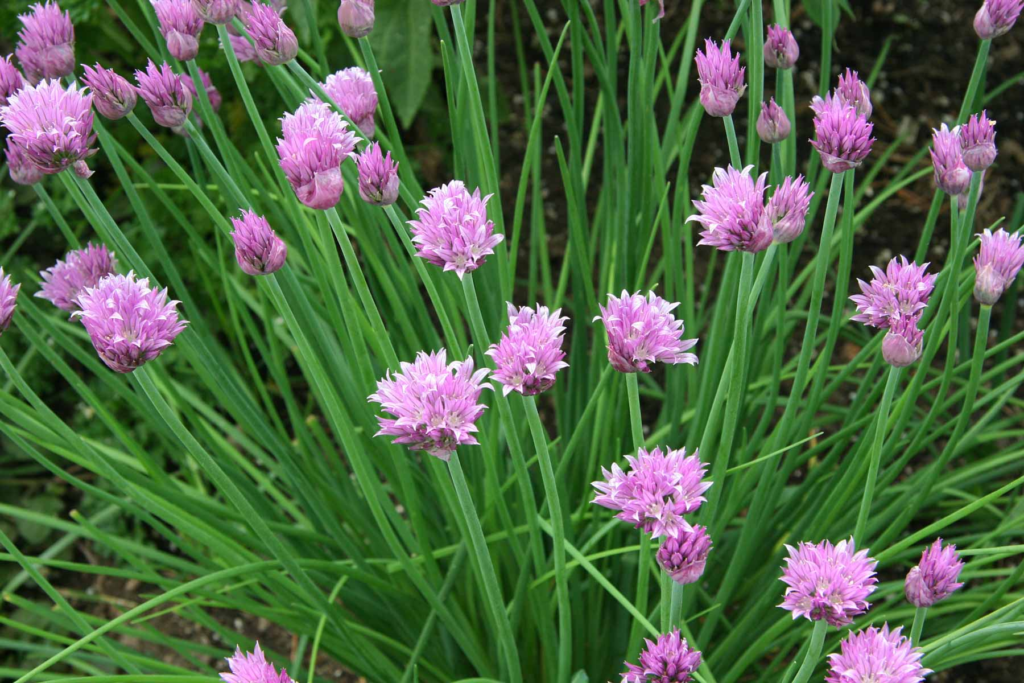
7. Dandelions: The Ubiquitous Superfood
Dandelions (Taraxacum officinale) are perhaps the most affordable edible flower of all—they’re free and likely already growing in your yard! Despite their reputation as lawn weeds, every part of the dandelion plant is edible and highly nutritious.
Growing Dandelions
While most people focus on eradicating dandelions, deliberately cultivating them is incredibly simple. If you’d like to grow them intentionally (perhaps in a contained area away from your lawn), you can direct sow seeds in spring or fall. Dandelions prefer full sun but will grow in partial shade, and they’re adaptable to most soil types as long as there’s good drainage.
For the tastiest flowers and leaves, provide rich soil and regular water. This counters the common belief that all dandelions are bitter—those growing in poor soil or under stress tend to develop more bitter compounds as a defense mechanism. Well-nourished dandelions, especially when harvested young, can be quite mild and pleasant.
Since dandelions are perennials with deep taproots, they’ll return year after year once established. They’re hardy in USDA zones 3-10, making them suitable for cultivation throughout most of the United States.
Culinary Uses
Dandelion flowers have a mildly sweet, honey-like flavor when young and tender. The closed buds are even reminiscent of capers when pickled. The golden blooms can be used in various ways:
- Battered and fried as fritters
- Steeped to make dandelion wine or tea
- Added to salads for a bright pop of color
- Infused in honey for a floral sweetener
- Incorporated into baked goods like muffins and cookies
When harvesting dandelion flowers for culinary use, select those growing away from roadsides or areas treated with pesticides or herbicides. The best time to harvest is mid-morning after the dew has dried but before the hot sun causes the flowers to close.
Health Benefits
Dandelions are nutritional powerhouses, containing more beta-carotene than carrots and more iron and calcium than spinach. The flowers are rich in polyphenols and flavonoids, which act as antioxidants in the body.
The National Center for Complementary and Integrative Health notes that dandelion has been used in many traditional medicine systems to support liver and digestive health. Modern research is investigating dandelion’s potential to help regulate blood sugar and reduce inflammation. You can find more information about ongoing research into traditional plant medicines at the National Center for Complementary and Integrative Health’s Herbs at a Glance section.
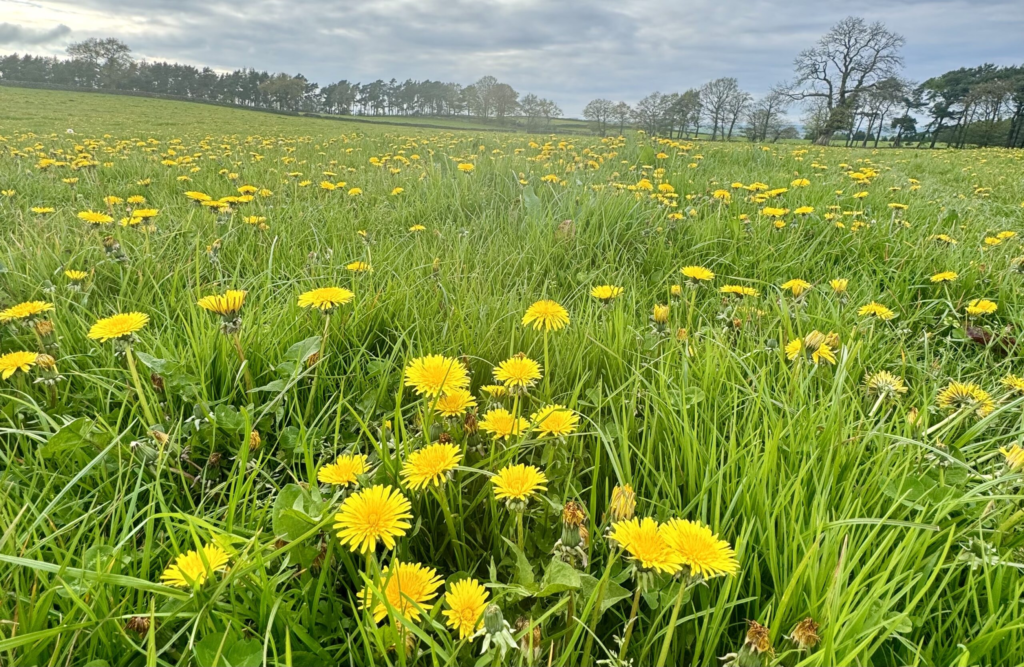
8. Squash Blossoms: Garden-to-Table Delicacies
The large, trumpet-shaped flowers of squash plants (Cucurbita species) are culinary treasures often overlooked by home gardeners. Both male and female blossoms are edible, though harvesting primarily male flowers (those with a straight stem rather than a small fruit at the base) allows your plants to continue producing squash.
Growing Squash
Squash plants are warm-season annuals that thrive in full sun and rich, well-draining soil. They’re heavy feeders, benefiting from compost incorporation before planting and regular fertilization throughout the growing season.
Direct sow squash seeds after all danger of frost has passed and soil temperatures reach at least 60°F. Plant seeds 1 inch deep in groups of 2-3 seeds, spacing these groups 2-3 feet apart for bush varieties or 4-6 feet apart for vining types. Thin to the strongest seedling in each group once they develop true leaves. Germination typically occurs within 7-14 days, with flowers appearing 35-45 days after planting.
For an earlier harvest, start seeds indoors 3-4 weeks before the last frost date in your area. Transplant seedlings carefully to avoid disturbing their sensitive roots.
Culinary Uses
Squash blossoms have a subtle, sweet flavor with notes of the squash variety they’ll eventually produce. Their delicate nature makes them perfect for:
- Stuffing with cheese or other fillings and lightly frying
- Adding raw to salads
- Incorporating into quesadillas or other flatbreads
- Making into fritters
- Using as colorful garnishes
Harvest squash blossoms in the morning when they’re fully open but before they begin to wilt in the afternoon heat. Use them promptly, as they have a very short shelf life even when refrigerated. If you must store them, place them in a single layer on a damp paper towel in the refrigerator for no more than a day.
Health Benefits
While not as nutrient-dense as some other edible flowers, squash blossoms still offer vitamins A and C, as well as small amounts of calcium, iron, and phosphorus. Their large size and substantial texture make them one of the more filling edible flowers, adding satisfying bulk to meals without many calories.
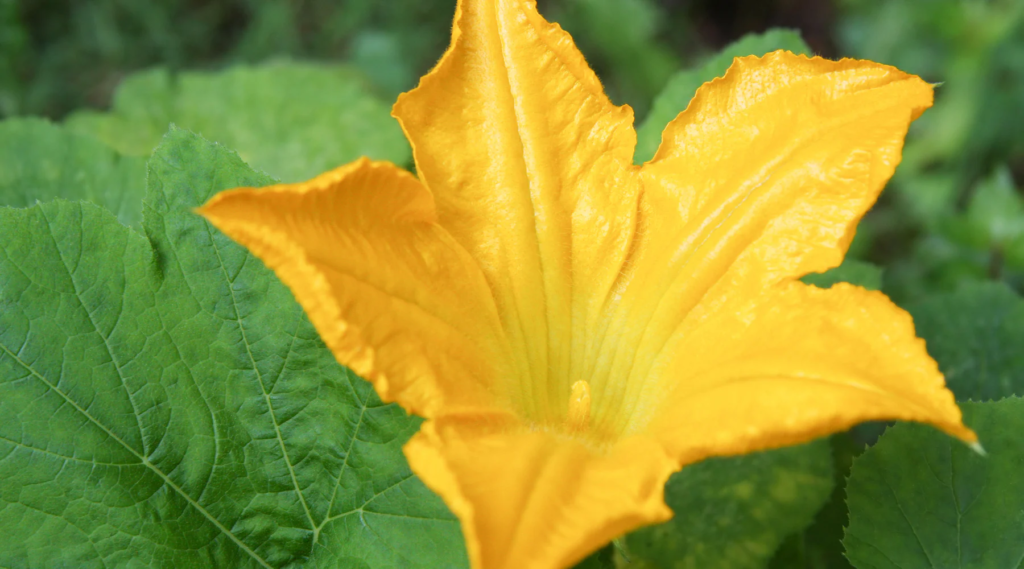
9. Bachelor’s Buttons: The Long-Lasting Blues
Bachelor’s buttons (Centaurea cyanus), also known as cornflowers, are striking blue annuals that add vivid color to both gardens and plates. These classic cottage garden flowers are making a comeback in culinary circles due to their mild, slightly spicy, clove-like flavor.
Growing Bachelor’s Buttons
These hardy annuals are remarkably easy to grow from seed. They prefer full sun and well-draining soil, tolerating poor soil conditions better than many garden flowers. Bachelor’s buttons are drought-resistant once established, making them suitable for water-conscious gardens.
You can direct sow seeds outdoors in early spring, as soon as the soil can be worked. In warmer regions (USDA zones 8-10), fall sowing is also successful. Sow seeds 1/4 inch deep and thin seedlings to 8-12 inches apart when they reach a few inches tall. Germination typically occurs within 7-14 days, with flowering beginning about 60-90 days after planting.
For a continuous display and harvest, consider succession planting every 2-3 weeks through mid-spring. Bachelor’s buttons readily self-seed if allowed, potentially providing years of flowers from a single packet of seeds.
Culinary Uses
The vibrant blue petals of bachelor’s buttons make them particularly valuable in the kitchen, as naturally blue foods are rare. They offer a slightly sweet, spicy flavor that complements both sweet and savory dishes:
- As a natural food coloring for frostings and beverages
- Sprinkled over salads for color contrast
- Frozen in ice cubes for striking summer drinks
- Infused in vinegars or oils
- Used in tea blends for both flavor and color
When harvesting, select fully opened flowers in the morning after the dew has dried. The entire flower head is edible, though some prefer to use just the petals for a more refined presentation.
Health Benefits
Bachelor’s buttons have a history of traditional medicinal use, particularly for eye complaints (reflected in one of their folk names, “eyebright”). Modern nutritional analysis shows they contain anthocyanins, the antioxidant compounds responsible for their blue color.
The USDA’s Agricultural Research Service studies edible flowers as part of their broader research into diverse food sources and has documented the presence of beneficial phytochemicals in many traditional edible flowers, including bachelor’s buttons.
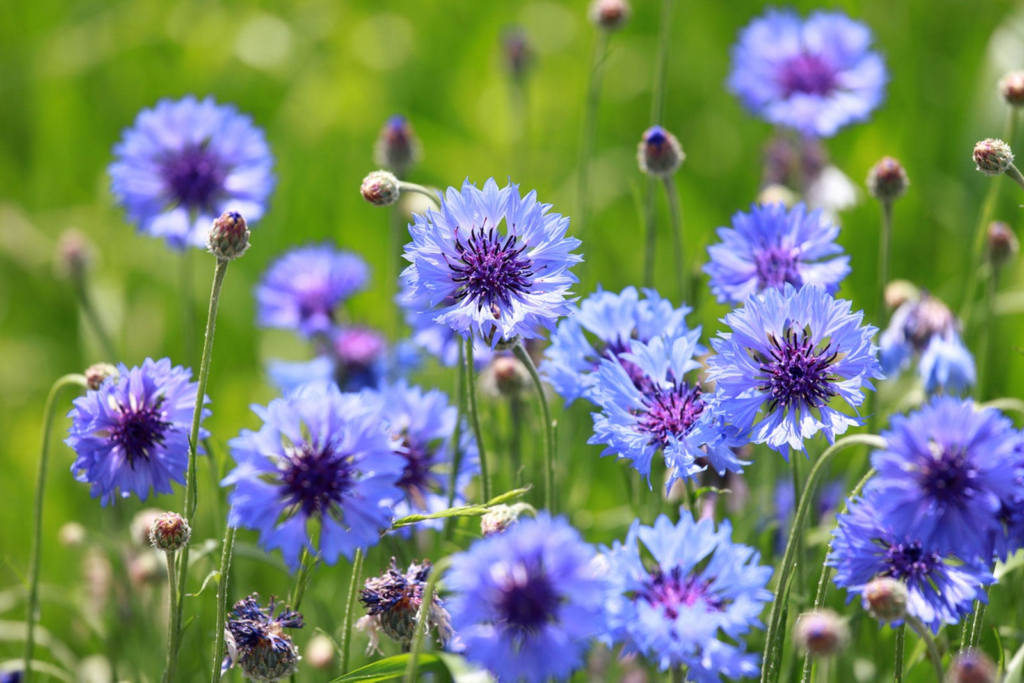
10. Daylilies: The Garden Workhorses
Daylilies (Hemerocallis species) are perennial favorites in American gardens, prized for their reliability and low maintenance requirements. What many gardeners don’t realize is that these beautiful flowers are also culinary delights across many Asian cuisines.
Growing Daylilies
Daylilies are among the most forgiving and adaptable perennial plants, thriving in USDA zones 3-9 across a wide range of conditions. They prefer full sun to light shade and well-draining soil, but they’ll tolerate clay soil, drought, and neglect better than most garden plants.
While daylilies can be grown from seeds, purchasing dormant roots or divisions from established plants is more common and produces faster results. Plant daylily roots in spring or fall, positioning the crown (where the roots meet the foliage) about 1 inch below the soil surface. Space plants 18-24 inches apart to allow room for their eventual spread.
Once established, daylilies require minimal care beyond occasional division every 3-5 years to maintain vigor. This division process provides you with free additional plants, making daylilies extremely cost-effective over time.
Culinary Uses
Daylilies offer multiple edible parts, each with unique characteristics:
- Flower buds can be harvested and prepared similar to green beans
- Open flowers have a sweet, crisp texture suitable for stuffing or adding to stir-fries
- Young shoots emerging in spring can be harvested and prepared like asparagus
- Tuberous roots are edible when cooked, with a nutty flavor
The flavor of daylily flowers is often described as a blend of summer squash and asparagus with slightly sweet undertones. In Chinese cuisine, dried daylily buds are known as “golden needles” and are used in many traditional dishes.
Health Benefits
Daylilies are rich in vitamin C and contain various beneficial compounds, including antioxidants and flavonoids. In traditional Chinese medicine, daylilies are believed to have calming properties and are used to address anxiety and insomnia.
It’s important to note that while daylilies (Hemerocallis) are edible, true lilies (Lilium species) are NOT edible and can be toxic. Always verify you’re harvesting true daylilies, identifiable by their tuberous roots rather than bulbs, and their growth pattern of multiple flower stalks emerging from a single clump.

Nutritional Comparison of Edible Spring Flowers
Understanding the nutritional profiles of edible flowers can help you make informed choices about which to incorporate into your diet. The following table provides a comparative overview of the nutritional highlights of our top 10 edible spring flowers:
| Flower | Vitamin Content | Mineral Content | Antioxidant Level | Special Compounds | Calories per 100g |
|---|---|---|---|---|---|
| Nasturtiums | High in Vitamin C | Moderate iron, manganese | High | Glucosinolates, lutein | 20-25 |
| Pansies/Violas | Vitamins A and C | Potassium, phosphorus | Moderate | Rutin, violanthin | 15-20 |
| Calendula | Vitamins A, B2, E | Calcium, potassium | Very high | Carotenoids, flavonoids | 25-30 |
| Borage | Vitamins A, C, B complex | Calcium, potassium, iron | Moderate | Gamma-linolenic acid | 20-25 |
| Violets | Vitamins A and C | Magnesium, iron | High | Saponins, anthocyanins | 15-20 |
| Chives | Vitamins A, C, K | Iron, calcium | Moderate | Allicin, quercetin | 30-35 |
| Dandelions | Vitamins A, C, K | Iron, calcium, potassium | Very high | Taraxasterol, inulin | 25-30 |
| Squash Blossoms | Vitamins A, C | Calcium, iron, phosphorus | Low to moderate | Carotenoids | 15-20 |
| Bachelor’s Buttons | Vitamins A, E | Zinc, potassium | Moderate | Anthocyanins | 20-25 |
| Daylilies | Vitamin C | Potassium, phosphorus | Moderate | Hemerocallin | 30-35 |
This nutritional data helps illustrate why incorporating a variety of edible flowers into your diet can contribute to overall nutritional diversity and wellness. The U.S. Department of Agriculture maintains comprehensive nutritional databases for many foods, though specific data on edible flowers is still emerging as research continues. For the most up-to-date nutritional information, you can refer to the USDA FoodData Central.
Edible Flower Blooming Calendar for US Climate Zones
Planning your edible flower garden for continuous harvests throughout spring and early summer requires understanding when different species bloom in your climate zone. The following table provides an approximate blooming timeline for the top 10 edible spring flowers across major US climate regions:
| Flower | Northern US (Zones 3-5) | Central US (Zones 6-7) | Southern US (Zones 8-10) |
|---|---|---|---|
| Nasturtiums | Late May – Frost | May – Frost | March/April – Heat of Summer |
| Pansies/Violas | April – June | March – May/June | Fall through Spring |
| Calendula | May – Frost | April – June/Resumes Fall | March – May/Resumes Fall |
| Borage | June – Frost | May – Frost | April – June/Resumes Fall |
| Violets | April – May | March – April | February – April |
| Chives | May – June | April – May | March – April |
| Dandelions | April – October | March – November | February – December |
| Squash Blossoms | July – Frost | June – Frost | May – Heat of Summer |
| Bachelor’s Buttons | June – Frost | May – Frost | April – June/Resumes Fall |
| Daylilies | June – August | May – July | April – June |
This calendar helps you plan your planting schedule to ensure a continuous supply of edible flowers throughout the growing season. For more specific information tailored to your exact location, the USDA Plant Hardiness Zone Map can help you determine your specific growing zone and expected frost dates.
Cost Analysis: Starting Your Edible Flower Garden
One of the most appealing aspects of edible flower gardening is its affordability. The following table breaks down the approximate costs associated with establishing each of our top 10 edible spring flowers, helping you make budget-conscious decisions:
| Flower | Seed Packet Cost | Plants Cost (each) | Perennial/Annual | Self-Seeding? | Cost per Season Analysis |
|---|---|---|---|---|---|
| Nasturtiums | $2-4 | $3-5 | Annual | Yes, vigorous | Very low: $2-4 for years of flowers |
| Pansies/Violas | $3-5 | $2-4 | Annual/Biennial | Sometimes | Low: $3-5 annually |
| Calendula | $2-4 | $3-5 | Annual | Yes, reliable | Very low: $2-4 for multiple seasons |
| Borage | $2-4 | $4-6 | Annual | Yes, prolific | Very low: $2-4 for years of plants |
| Violets | $3-5 | $5-8 | Perennial | Yes | Initial investment only; spreads readily |
| Chives | $2-4 | $3-6 |
